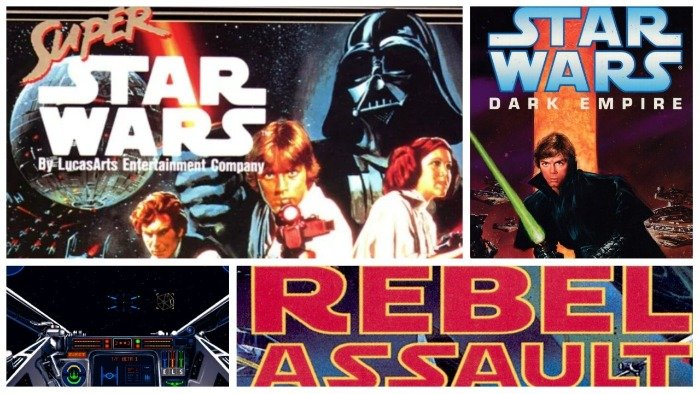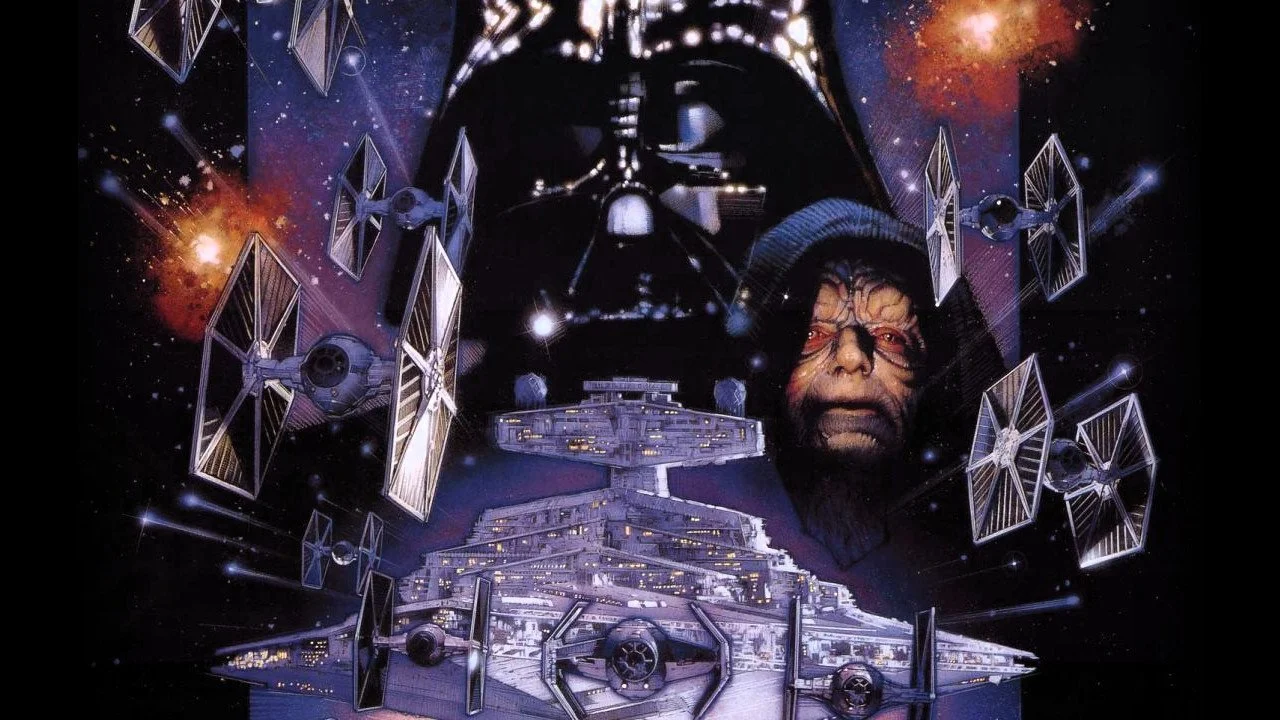How ‘Star Wars’ Media In The 1990s Shaped The Franchise Today
Image Source: Damien Walter
The history of the Star Wars franchise stretches back over 45 years. Today, it is one of the largest multimedia franchises, with movies and television shows slated for the next few years, as well as numerous video games, novels, comic books, toys, and tabletop games coming out every year. Star Wars has expanded into a galaxy of adventures, no longer focusing on the saga of Anakin and Luke Skywalker.
It may be surprising for the modern-day Star Wars fan that there was a period when the franchise seemed to have reached its peak and was all but forgotten in the public eye. Star Wars as a franchise seemed to have waned in popularity after Return of the Jedi in 1983. While Lucasfilm released two live-action films, Caravan of Courage: An Ewok Adventure and Ewoks: The Battle of Endor, and two animated series, Star Wars: Droids and Ewoks, in the period between 1984 and 1986, these failed to leave lasting impressions.
RELATED:
By the end of the 1980s, Star Wars seemed to have become a thing of the past. The Star Wars Marvel comics ended in 1987, and the Kenner Star Wars action figures were discontinued in 1985. After that, it only seemed West End Games’ Star Wars: The Roleplaying Game was releasing Star Wars material regularly by 1989.
1990-1993: Resurgence Of Interest
By 1990, Star Wars seemed to be all forgotten. Indeed, even the Star Wars official website mentioned the period between 1987 to 1991 as ‘The Dark Times’ when fans feared that the franchise was dead. In 1990, the only notable Star Wars-related events were those concerning the tenth anniversary of The Empire Strikes Back.
This all changed with the release of Timothy Zahn’s Heir to the Empire novel. Released in May 1991, Heir to the Empire marked a new chapter in the Star Wars franchise with a significant expansion to the lore. Heir to the Empire introduced fan favorites Admiral Thrawn and Mara Jade to what would later be known as the ‘Expanded Universe. In December of that year, Dark Horse Comics launched the Dark Empire comic book series, which expanded upon the presence of clones in Star Wars and featured a revived, cloned Emperor Palpatine.
1992 saw the release of Super Star Wars on the SNES, a critically acclaimed side-scrolling platformer. The following year, Star Wars: X-Wing was released by LucasArts in February, while Star Wars: Rebel Assault was released in November 1993. These two games marked the beginning of Star Wars games developed and/or published by LucasArts.
By the end of 1993, the Star Wars franchise was practically revived through novels, comics, and video games. This would only be the beginning of what would come in the rest of the decade.
1994-1996: Return Of The Franchise
Interest in Star Wars continued to experience a resurgence by the mid-1990s. Novels such as The Courtship of Princess Leia, comics like the Tales of the Jedi series, and video games, namely Star Wars: TIE Fighter, continued public interest in Star Wars. 1995 saw the return of Star Wars toys, with Kenner releasing Star Wars action figures for the first time since 1985.
1995 was also a milestone year for Star Wars video games with the release of the first-person shooter Star Wars: Dark Forces on PC. On VHS and Laserdisc, the original Star Wars Trilogy was re-released, allowing old and new fans to enjoy the adventures of Luke Skywalker at home.
In 1996, the multimedia project Shadows of the Empire was launched with the novel’s release. The Shadows of the Empire project also saw tie-in comics, toys, and a video game that would become a template for future Star Wars events, including the release of the ‘new Star Wars movie’ at the end of the decade. The same year also saw the launch of StarWars.com, the franchise’s official website.
1997-1999: The Star Wars Renaissance
The last three years of the 1990s would be a culmination of Lucasfilm’s Star Wars marketing efforts and the beginning of a new age for the franchise. 1997 kicked off with the theatrical releases of the Star Wars Special Editions in January (A New Hope), February (The Empire Strikes Back), and March (Return of the Jedi). Well received by audiences, the Special Editions featured CGI technology which would be used in the upcoming Prequel trilogy.
That same year, George Lucas began production of a new Star Wars film. While this alone was significant for the fandom, broader public interest in what would become The Phantom Menace truly started with the casting announcements.
Lucasfilm doubled down on Episode I by casting prominent Hollywood actors of the 1990s. Liam Neeson, Natalie Portman, Ewan McGregor, and Samuel L. Jackson brought clout to the new Star Wars movie.
1997 also saw the founding of the 501st Legion, which would become the largest Star Wars costume fan group focusing on cosplaying Imperial characters from the franchise. In recognition of the fan group, Lucasfilm would later make them part of Star Wars canon.
Fan anticipation for the new Star Wars prequel (a term later popularized) grew in the intervening years. Rumored titles were thrown around by fans - Balance of the Force, Children of the Force, Star Wars: Genesis - with the official title, The Phantom Menace, announced in September 1998. Toys, posters, and even a trailer came out later that year to feed curious fans until May 1999.
Star Wars Episode I: The Phantom Menace was released on May 25, 1999. Fans had lined up for its premiere, recalling the release of the original Star Wars movie 22 years prior. The Phantom Menace opened to record-breaking opening day and opening weekend numbers. While it was far from a perfect Star Wars movie and would later be derided by certain Star Wars fans, The Phantom Menace undoubtedly became a cultural milestone and the beginning of a new era for Star Wars.
At the close of the 1990s and with the first Prequel released, the Star Wars franchise would continue to evolve throughout the next century. Indeed, to move away from endless stories of the New Republic fighting the Imperial Remnant, the Star Wars Expanded Universe novels would introduce the Yuuzhan Vong as a new foe.
The continuing growth of Star Wars would then see the franchise return to cinematic releases, with the Sequels continuing the Skywalker Saga and the new spin-off movies, Rogue One and Solo. In addition, Star Wars would expand into animation, and online games, including MMORPGs, mobile gaming, and tabletop games, while continuing to publish comics and fiction.
Only with the release of The Mandalorian in 2019 did Star Wars finally enter the realm of live-action television through Disney+, Disney’s streaming service. Forty-five years since the release of the original Star Wars in theaters, the franchise is still alive and well, thanks to the availability of Star Wars-related multimedia and merchandise today. In retrospect, the 1990s should be hailed as the ‘Star Wars Renaissance’ where the franchise was reborn into what it is now.
READ NEXT:






